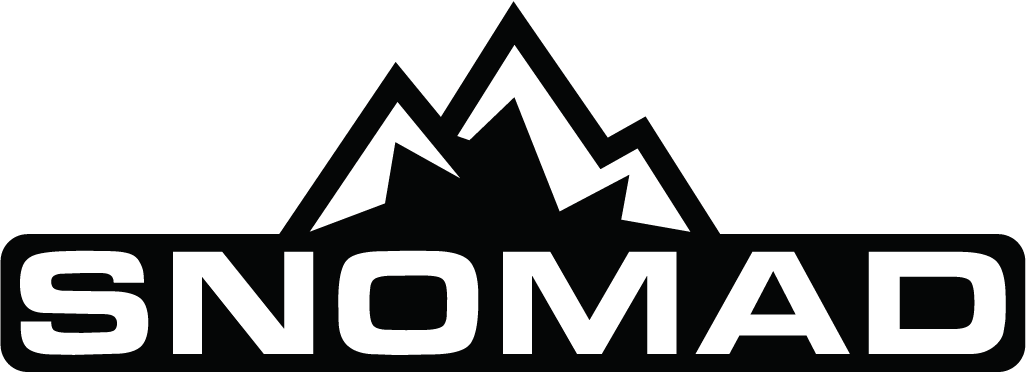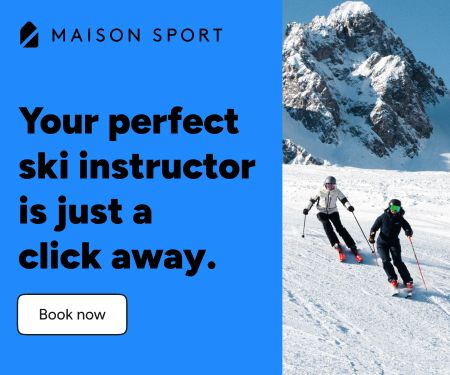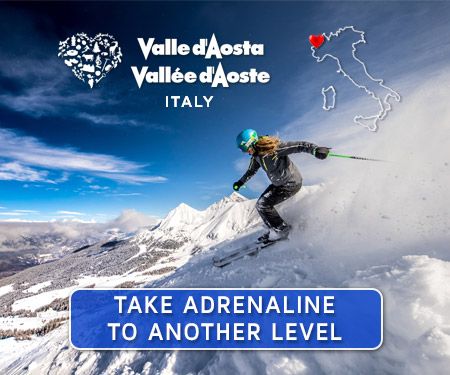
Holly Price
Apr, 23 2025- 6 mins
How Long Does It Take to Learn Skiing?
While the sporty, sexy ‘swish swish’ of skiing looks effortless, anyone who has attempted to ski will appreciate it’s not quite that simple. Learning to ski takes practice, time and experience which will likely differ from person to person based on a few factors like fitness, budget and proximity to the slopes. However, don’t be disheartened — not only is skiing something you can learn at any age, fitness level and location, but it’s also perfectly achievable in a relatively short period of time. In this guide, we’ll consider what factors affect that timeframe and what you can do to get down those sun-drenched slopes as soon as possible.
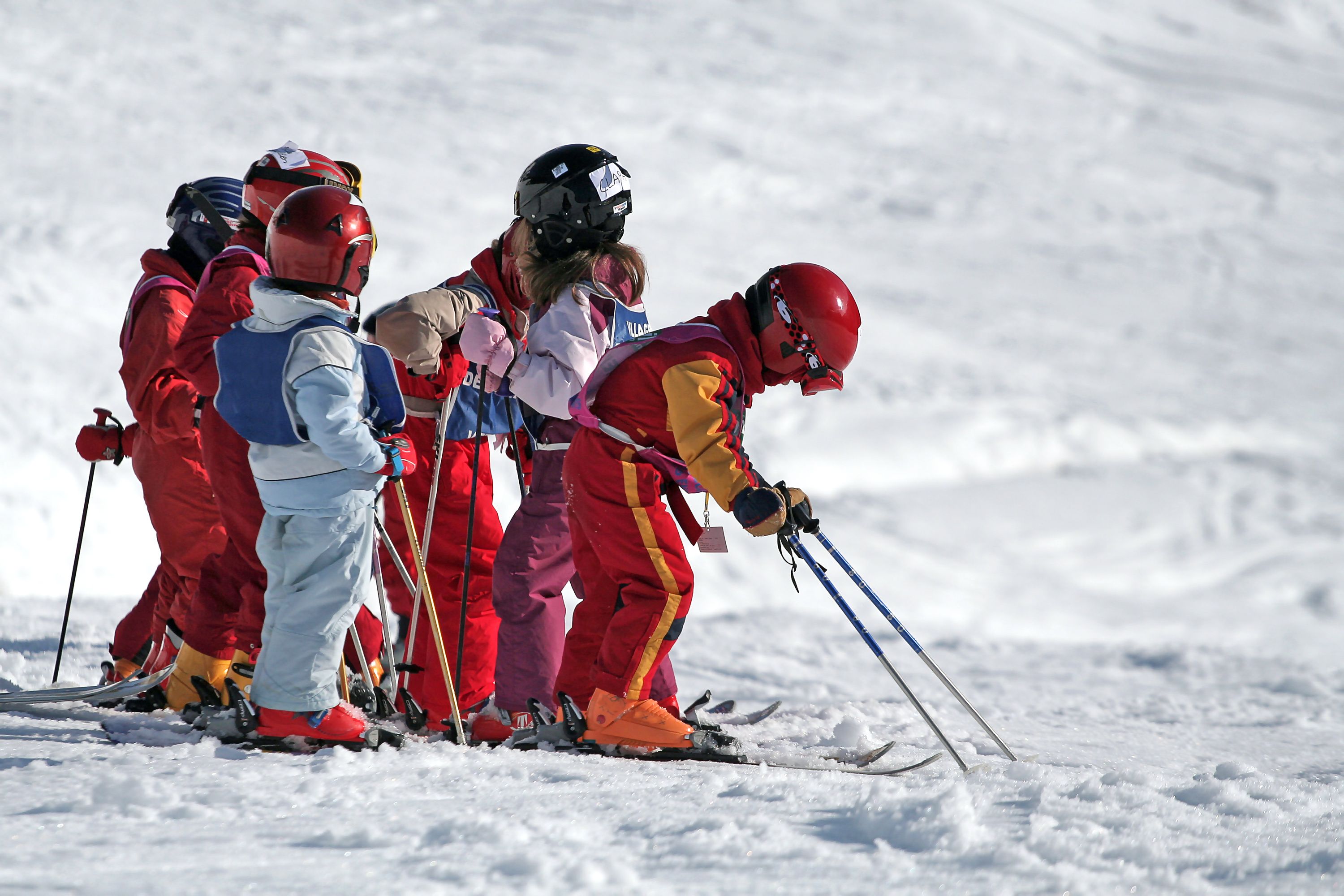
What Does “Learning to Ski” Actually Mean?
Learning to ski begins with the basics – while you might be imagining getting straight into that sophisticated parallel motion, learning the sport is about mastering control to start with. This involves learning how to balance, slow down, and stop effectively. Beginners typically begin on gentle green slopes (the easiest runs) where they practice the snowplow or ‘pizza’ stop, where you position your skis like a wedge or an arrow to turn, maintain control and stop.
Once you’ve got the basics nailed, you can progress onto steeper terrain where linked turns will be essential for smooth riding and speed checking. Blue runs are the next step up, where steeper gradients will require better turns.
After mastering your linked turns, the next stage of learning to ski will be fine-tuning things like edge control, weight distribution and the overall rhythm of how you move. These factors will push you into the ‘advanced’ bracket and allow you to tackle red and black slopes. At this stage, you should be able to control your speed confidently on any gradient and stop quickly, performing what is known as a ‘hockey stop.’
Overall, learning to ski is a gradual process that will see you improve, advance and hone your technique over time.
What is a hockey stop in skiing?
A hockey stop is a fast skiing stop that takes its name from an ice hockey technique that players use to change direction quickly. The motion is essentially a parallel turn that slides to a very quick stop, so that your skis are pointing across the mountain in parallel.
How Many Days Does It Take to Learn Skiing?
To learn and not ‘master’ skiing, it takes the average beginner 2–3 days to manage green runs confidently. After 5–6 days, most can progress to blue and mellow red runs. For the best results, this would ideally be carried out over six consecutive days rather than scattered throughout the year.
To ‘master’ skiing and get to that sporty, sexy ‘swish swish’ parallel skiing look, it can take up to 10 weeks of consistent practise. However, it’s important to keep in mind that you won’t have fully mastered the sport without considerable experience. One of the great things about skiing is that there are always new aspects to improve on whether you are looking at levelling up your carving turns and increasing your edge angles, refining your freestyle skills and sliding rails in the park or working on your powder skiing technique. Very few people in the world can claim that they have truly mastered skiing across all its forms. To truly improve and ensure proper technique, one of the best ways to do this (whatever level you are) is to book a private ski instructor. Be sure to check out Maison Sport to find the perfect insturctor for you.
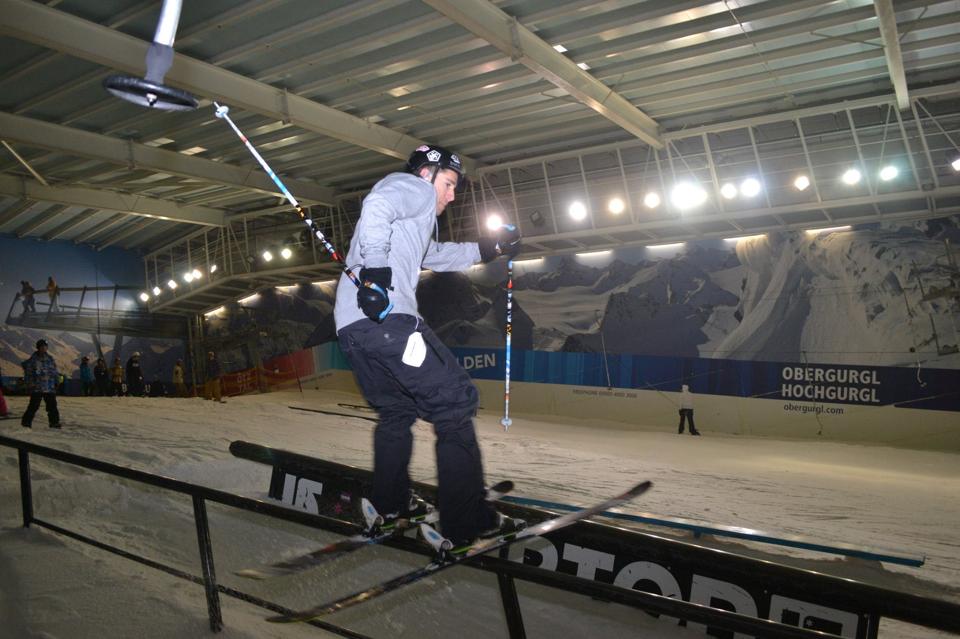
Can I Learn to Ski in a Day?
If you’ve read all of the article so far, you’ll probably be aware that it’s highly unlikely anyone will learn to ski in a day. If you’re just starting out, ensure that your expectations are realistic. It’s more achievable to nail the basics of skiing in one day with a good instructor, but don’t expect to be going full send down a black diamond after just a few hours. Safety is paramount, which is why learning hours logged, experience and practise under the guidance of a skilled instructor are essential.
Remember: If you’re learning during a ski holiday or trip, conditions in resort will play a huge factor in your learning progress, too. Things like bad visibility, patches of ice and warm, slushy conditions can make things tricky. That's why heading out with an experienced, local instructor (who knows all about the best spots for easy learning) will help.
What Age Is Best for Skiing?
You can learn to ski at any age - it’s a lifelong sport that people practise way into their 90s!
Many ski schools begin lessons for kids as young as 3 or 4 years old and for good reason - at this age, children have the advantages of being fearless, low to the ground and flexible, a great combination for learning to ski.
That said, adults can learn to ski at any age and often progress faster in some areas. While you might have more fear as an adult that contributes to your hesitation or nerves, you’ll also have a better understanding of instructions, more powerful muscles and better judgement. With the right instructor, most adults can learn the basics of skiing within a week.
Ultimately, the best age to start skiing is whatever your age is right now - time will pass anyway so you might as well spend it mastering a new skill!
Factors That Affect How Fast You Learn
Just like young children have an advantage thanks to their flexibility and fearlessness, there are some other things that will naturally affect your learning. These include:
Quality of instruction - In a toss up between your mate who goes skiing once a year and a qualified instructor who lives in resort, there’s not much competition in terms of the higher quality of coaching. By being picky with your instructor (and opting for private lessons as opposed to a group if you can) you’ll benefit from expert insights, 1:1 levels of attention and feedback or tips that will be crucial for progression. Maison Sport allows you to be as picky as you like, with thousands of reviews on ski instructors across most ski resorts.
Fitness and coordination - While someone with a relatively low fitness level can absolutely master skiing, having a decent level of fitness is likely to get you there quicker and easier. Skiing puts a lot of strain on your legs and core, so ensuring you have strong quads and good balance can help prevent any injuries as well as making the learning process easier.
Mental attitude and confidence - If you can, adopting the fearlessness of a 4-year-old will help you to progress by ensuring that you’re not tensing up and nervous. Many things are possible with a can-do attitude, but not much is possible if you have a negative or fearful outlook. A good instructor will help you with any specific anxieties you might have.
Conditions in-resort - Unfortunately, no one can control the weather. You might be treated to fresh dumps and bluebirds all week, or every day could be a white out. In the event where the visibility is reduced, make sure you stick close to resort and go low into the trees if you can. For the best snow conditions, January, February and early March tend to be the best times to opt for, but being aware of icy spots and the orientation of the sun can help avoid the tricky spots. Taking a look at our ranking tables for things like beginner friendliness, groomers and quiet slopes can help you pick a suitable resort.
Previous experience with similar sports - Participating in other sports that require a similar movement or employ the same muscle groups can help you learn to ski quicker. Things like ice hockey, ice skating and rollerblading have a similar movement, while board sports like surfing and skating are closer in style to snowboarding, but will still help with balance.
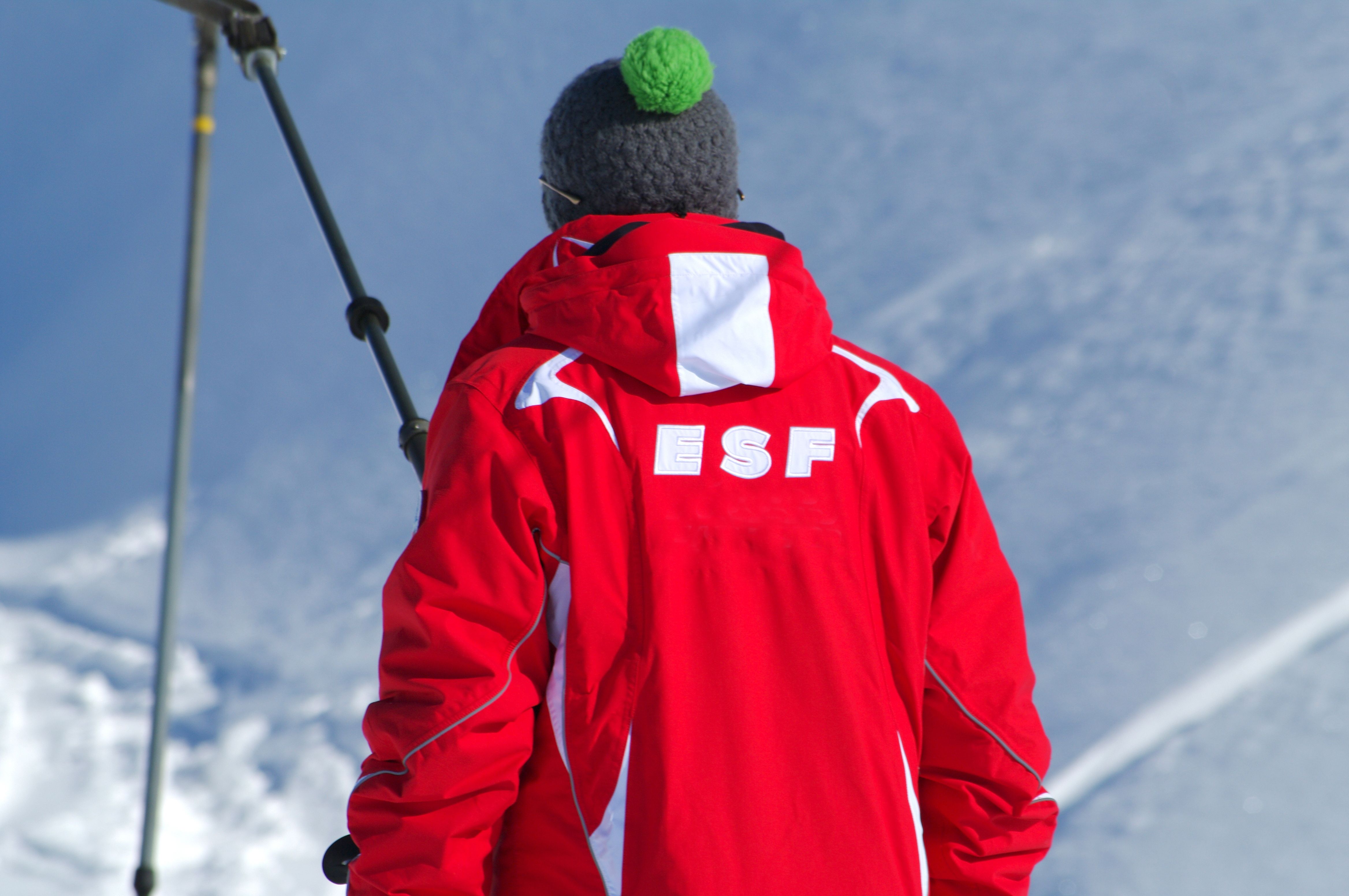
When Will Skiing Feel “Easy”?
Most people feel comfortable and in control within 5–7 ski days, which is when learners can usually progress onto more advanced slopes. Remember though that mastering your ski technique is a marathon, not a sprint. Real progress comes season after season, when you have the experience under your belt in different weather, snow and crowd conditions — and on varying terrain.
Even the most skilled skiers out there continue to find new challenges (moguls, powder, off-piste, etc.) This is what keeps skiing fun — you can always find new challenges and enjoy the continuous journey of improvement.
Tips to Speed Up Your Learning
Raring to get out there? Here are our hot takes on what you can do to speed up your learning:
- Take lessons: this is a non-negotiable. Find your ideal, in-resort instructor and put in the hours with them to see your progress soar.
- Rinse & repeat: By this we mean - find a run that you absolutely love and repeat it over and over to build your confidence. Don’t allow others to peer pressure you into doing something before you’re ready, as the consequences (both physically and mentally) could set you back.
- Ski on consecutive days: nothing interrupts your learning process quite like having days, weeks, months or even years between your ski sessions. If you can, block out at least a week to dedicate to daily ski sessions or lessons for faster progress.
- Challenge yourself: as the old sayings go, nothing interesting happens in the comfort zone, what doesn’t challenge you doesn’t change you, etc etc - the point is, there will come a moment when you’re ready for the next step — don’t let it pass you by.
- Do some homework: Not to go all back-to-school on you, but watching technique videos and having a decent stretch/workout regime tailored to skiing can help you improve faster, too.
- Rest and eat well: Fatigue slows learning, which you might want to keep in mind before you order that fifth shot at après.
Ultimately, learning to ski is a process that is unique to everyone. Things like how often you can get on the hill and your personal fitness levels will come into play, as well as the skiing conditions in resort and the quality of your coaching. Be sure to invest in some lessons from an experienced instructor, who will be able to tailor each session to your needs and provide valuable feedback that will help you progress.

